
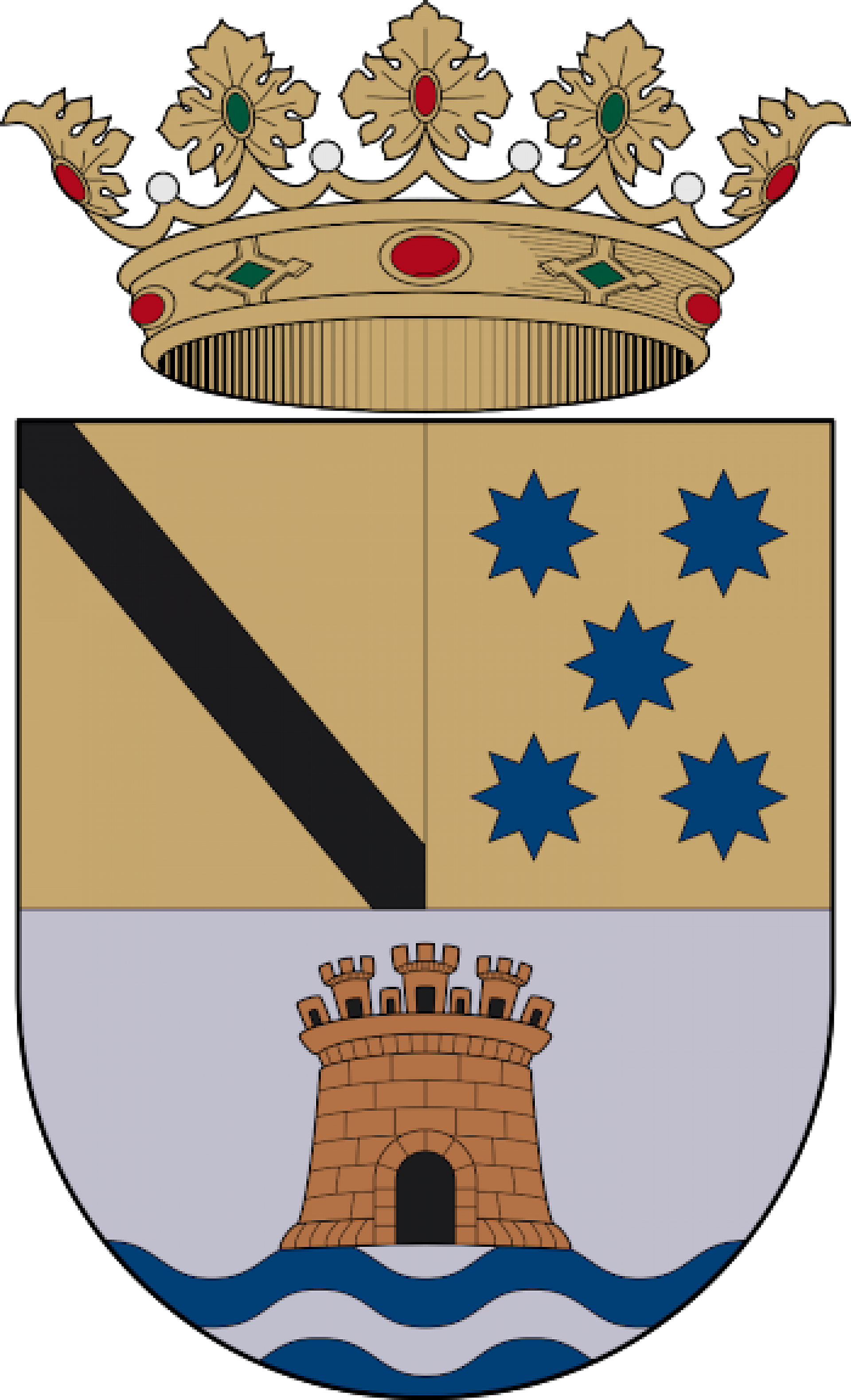
Population:
42.166 (2019)
Flag:
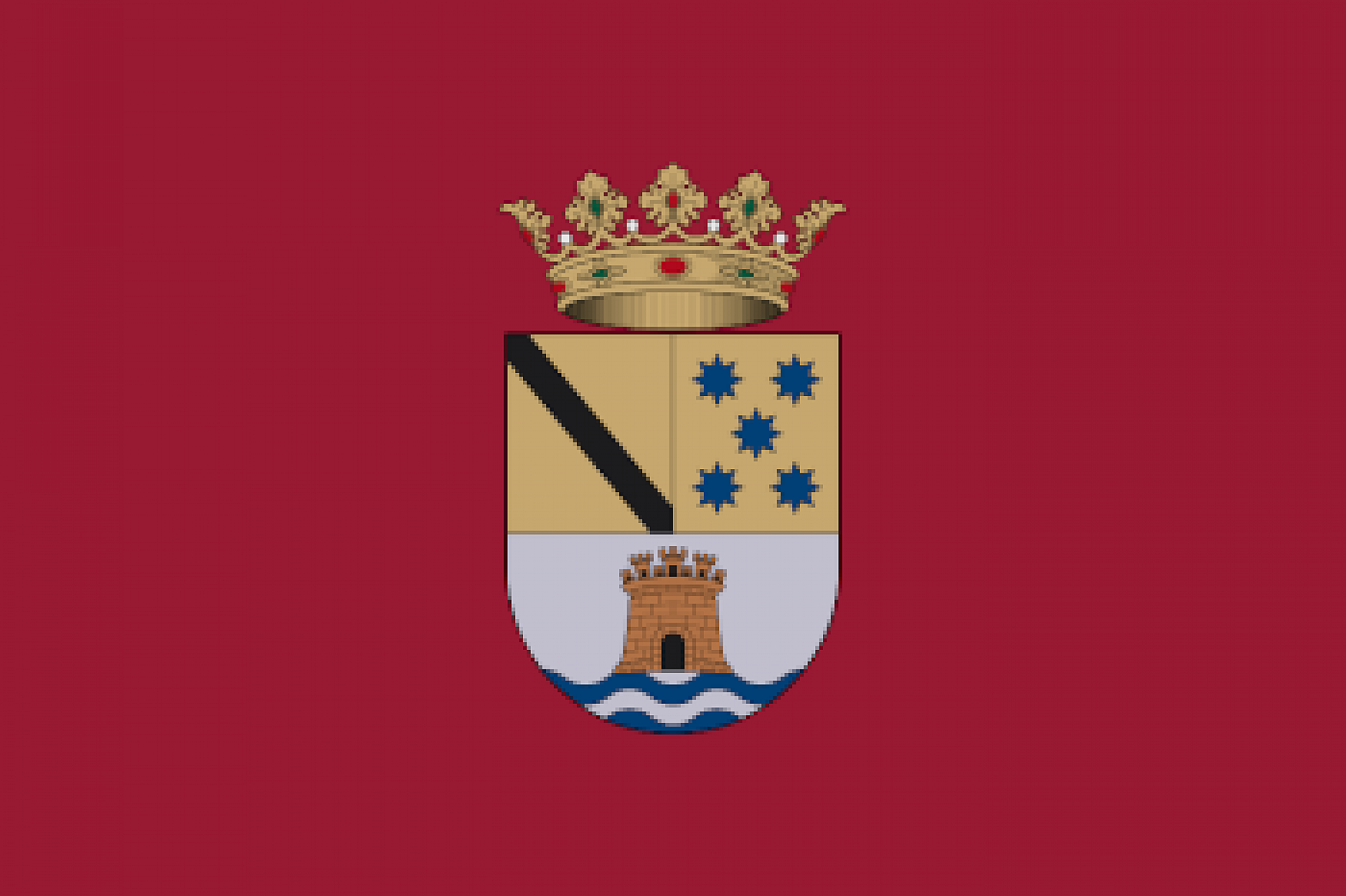
Location: coast
Alicante: 91 km
Airport Alicante: 106 km
Torrevieja: 159 km
Dénia in a nutshell:
Halfway between Alicante and Valencia, Dénia has developed as a major tourist destination on the Costa Blanca. Like many towns and villages along the costas, Dénia has invested a lot of time, energy and money in developing a wide spectrum of sights, activities and facilities. All aimed at the modern tourist, who demands a wide and varied package of choices.
Spread over a coastline of twenty kilometers, bathers can choose from six wide sandy beaches and a pebble beach in the north (the Las Marinas area) and five cozier rocky coves in the south (the Las Rotas area). Along the beaches there are various gyms, installations and infrastructure for the practice of water sports such as: canoeing, rowing, kite surfing, underwater sports, windsurfing and fishing. Due to its location, Dénia is also an ideal base for visiting the islands of the Balearic Islands. There is a direct connection to the archipelago. The shortest is the 55 nautical mile route to Ibiza.
History buffs can also indulge themselves here. The ancient castle from the 11th century, perched on a small hill by the sea, is the first logical choice for a visit. But the traces of the rich past can be found in many other places. Culture buffs only need to take a quick glance at the annual agenda to realize that the package of parties, festivals and other cultural activities is almost endless. Buyers are not forgotten either. Many shopping centers, markets, flea markets, the fish auction and tourist markets together provide an extensive range.
Those who pursue a healthy way of life can, in addition to the already mentioned water sports, put on their hiking boots for one of the numerous short or longer hiking routes, about which the tourist office can provide extensive information. Or play golf or tennis, pamper yourself at one of the city's two spas where hydrotherapy baths await.
Dénia is particularly proud of the honor that the UNESCO World Heritage Oranization awarded the city in 2015 as "the creative city of gastronomy". A booklet with many local recipes with a lot of fish, shellfish and rice is available at the tourist office.
Like almost everywhere in the coastal area of the Costa Blanca, Dénia has over the centuries attracted the unwanted interest of flourishing and hostile cultures because of its location by the sea. The presence and influence of the Iberians, Romans and the Moors are still tangible in today's Dénia. Nowhere else can old Dénia be felt as directly as in the old town, especially the monumental castle. On the slope leading to the castle, houses and fortifications dating back to Roman rule when Dénia was called Dianium have been found. That name referred to the Roman goddess of the hunt Diana. The castle itself mainly bears the traces of the time when Islamic civilization dictated life in the town. The Muslim architecture of the 11th and 12th centuries, despite various additions and renovations over the centuries, still determines what can safely be called Dénia's pride. Dianium had meanwhile been dropped as a name by the Moors and made way for Daniya.

In addition to the castle, there are several other objects of historical interest, such as the old town of Vila Vella with ruins of medieval houses and the Baluard, a defensive tower that controlled the main gateway to the old town in the 13th century. The entrance gate itself with three arches is of Islamic origin from three different periods.
If you want a handy insight into what made Dénia what it is today, you can visit the museums, each of which tells a part of that history from a different angle. Here is a brief description of four of those museums.

The lifeblood of Dénia is the Marques de Campo street, which runs east of the castle complex. This vital commercial center is home to many banks, shops, cafes and restaurants. This street leads to the port of Dénia. At the end of Paseo Saladar one can see remains of the northeastern defensive wall of the old Muslim fortress of the city. Harking back to a more recent past are the castle tunnels, which connect the Ronda de las Muralles with the historic center. These were built during the Spanish Civil War as bomb shelters.
The old center owes much of its charm to the numerous stately buildings, which were mainly built in the 19th and 20th centuries.
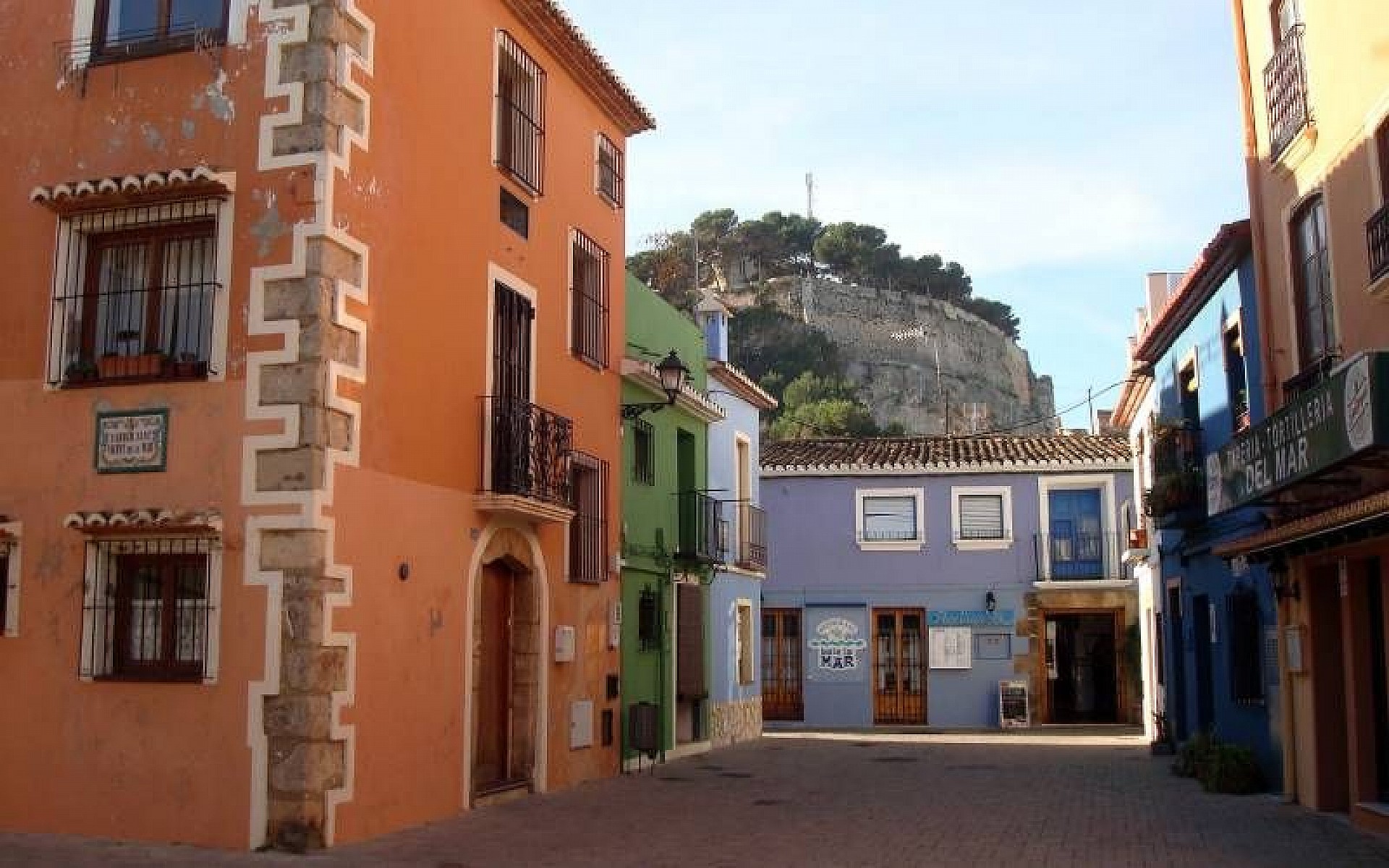
Dénia also has two old residential areas near the sea where it is pleasant to stroll around. The Barrio Baix la Mar is the area that has been inhabited for centuries by fishermen and other seafarers. The small houses in the narrow streets are brightly colored with lots of blue, red and yellow. Together with the wrought iron balconies and the floral splendor that the residents like to show off, this gives the old quarter an idyllic atmosphere. The houses date from the 18th and 19th centuries, but there are strong indications that there were also houses here during the Moorish rule. From the district it is a short walk to the coast where numerous restaurants with terraces under shady palm trees further enhance the idyllic picture.
In the immediate vicinity of the castle is the Les Roques district. The houses here date from the 19th and 20th centuries and are partly built on the ruins of an old Arab medina. Les Roques also exudes a pleasantly relaxed atmosphere.
The most important churches in Dénia are all centuries old. The church de la Asuncion (Assumption of Mary) from the 18th century has been partially rebuilt after the damage the building suffered during the civil war. The baroque architectural style has been preserved. A striking detail is the niche above the entrance with an image of a saint.
The San Antionio church has also been thoroughly restored after its original construction in the 17th century and also has a niche with a saint above the entrance. The Nuestra señora de Loreto church is a small place of worship, which is located in a monastery founded in 1604.
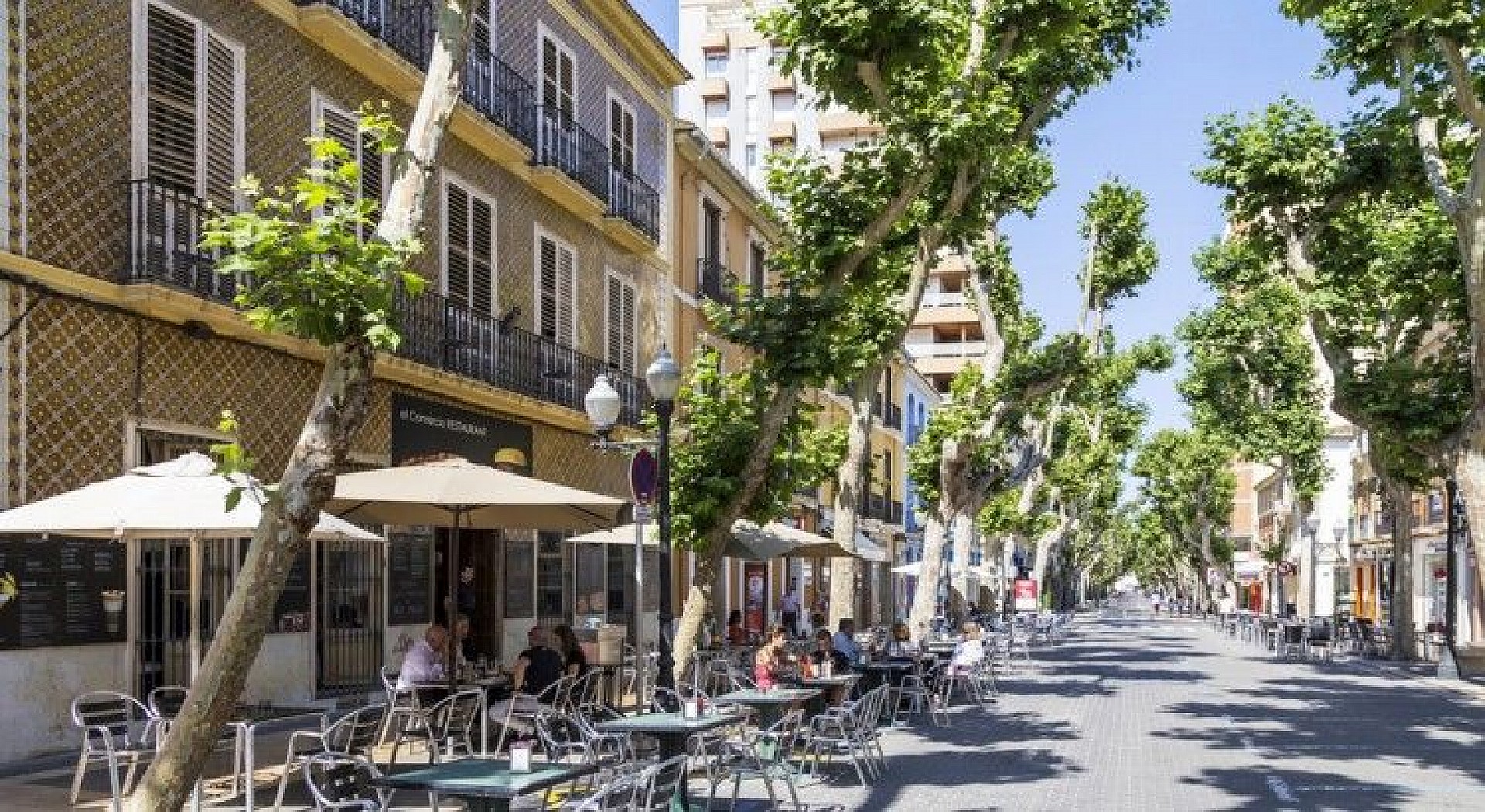
The Dénia countryside has many more hermitages (chapels), dedicated to local saints. These are scattered throughout the area and are places of pilgrimage for the locals during holy days. The tourist office can help set up a logical route through these religious sites.
Especially for enthusiastic hikers, the tourist office has also mapped out three different routes, which take in the highlights of Dénia. A route focuses on the historic center and the castle. The second route covers the area around the southern sea side, while a third one covers the northern side along the Mediterranean Sea.
The natural wealth is one of Dénia's many trump cards. An important destination for nature lovers, hikers and cyclists is the park of the Montgo mountain, which is 753 meters high. The park is home to more than 650 species of plants such as wild thyme, sea fennel, juniper, and dwarf palms. The fauna is equally diverse with several birds of prey such as falcons, eagles and owls. Foxes, genets, badgers and weasels as well as all kinds of reptiles also live on the lower part of the mountain. For a good insight into the exact flora and fauna on the mountain, a visit to the information center of the park is worthwhile. There one can also learn about the hiking and cycling routes that have been mapped out on the mountain. Some are short and easy, while others are longer and require more zest and energy. Here is a short summary of some routes.
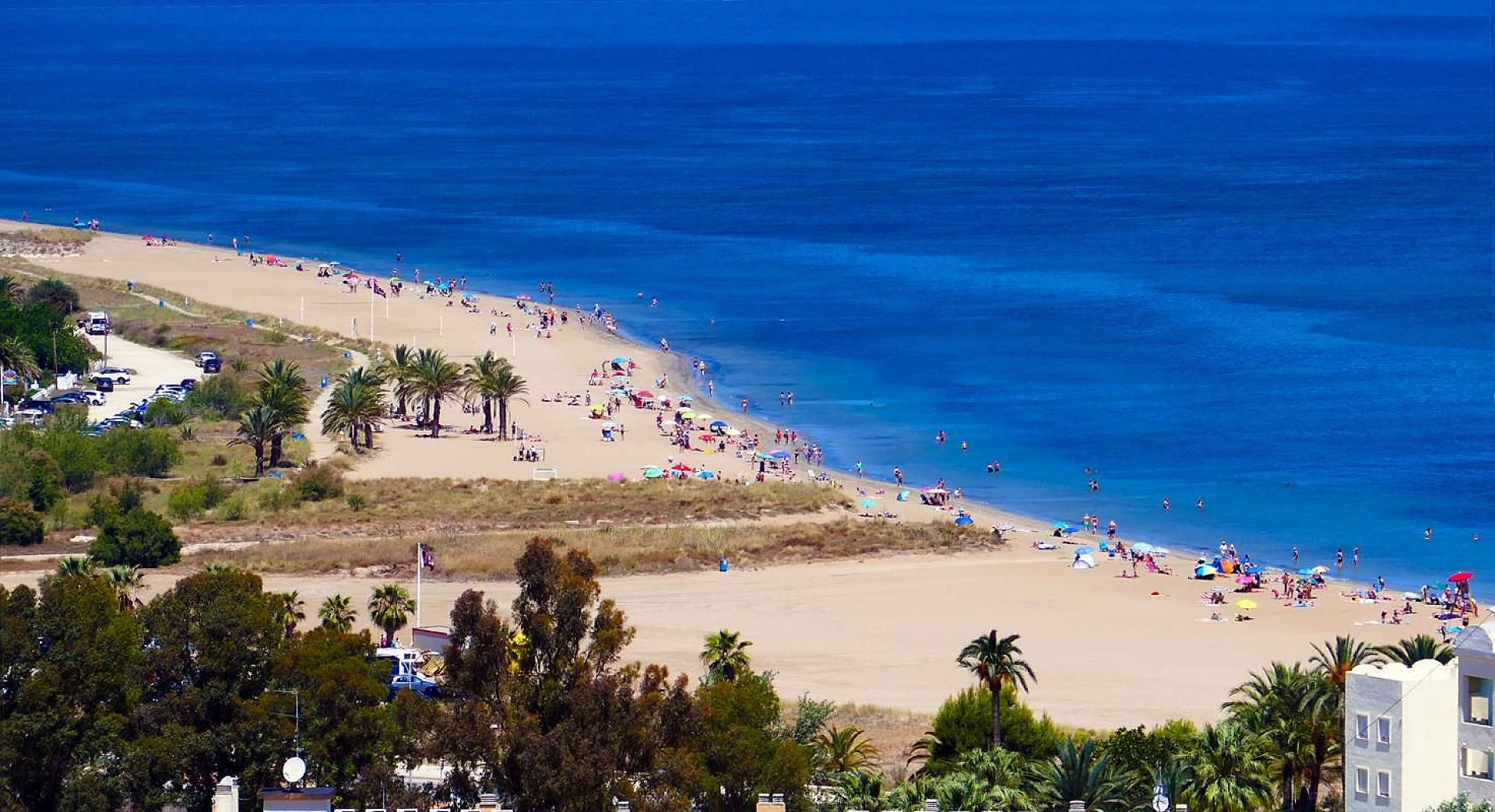
The Cape San Antonio Seabeds Nature Reserve offers nature lovers a completely different experience. This protected area is of great ecological value. The seabed is rich in corals, algae, seagrass beds and caves and dark caves. Due to the importance of the reserve, there are strict rules for diving (request a permit in advance), but snorkelling is allowed. In addition to many fish, countless waterfowl, sea turtles, dolphins and even whales are regularly sighted in the reserve. At the park is an observatory where a large panel tells which animals can be observed.

The so-called green route leads along the old train track that connected Dénia to El Vergel. There is a paved path for pedestrians and an asphalted area for cyclists. This six-kilometre stretch is surrounded by an agricultural landscape with orange trees, pine trees and old houses. Along the way is a small recreation area with observation posts and training devices. This route is also suitable for wheelchair users.
Also popular for walkers and cyclists is the five kilometer long Les Rotes route. This leads along a rocky part of the coast. On the way you pass a sandy beach, the rocky Les Rotes bay, the protected marine reserve of San Antionio and finally the 125 meter high old Gerro watchtower, which dates from the 17th century.
The cultural and festive calendar has enough offers every year to entertain, fascinate, amaze and in a few cases irritate people. Let's start with the latter. In the eyes of many non-Spaniards, part of the main festival of Dénia under the sign of the blood of Christ is quite controversial. For the first two weeks in July, the Bous a la Mar (Bulls by the Sea) is a spectacle where participants are chased by bulls. This not harmless bull run has elements of the famous Pamplona festival. Instead of running through the streets, the idea here is to lure the animals to the quay in the hope that they will chase them when they jump into the water. Despite a growing aversion among many, this is a spectacle that has the predicate of national tourist interest. The rest of the festivities during these two weeks (processions and concerts) are free of criticism.

The Fallas festival (from 16 to 19 March) is modeled after the biggest party in Alicante. This feast of parades with large satirical puppets culminates in the burning of these Fallas. This happens at the beginning of spring and symbolizes the transience of everything. In addition to bizarre giant dolls, the party revolves around eating meals together in the neighbourhoods, lots of music and fireworks. More burns are on June 24 with the San Juan Bonfires on the beach, marking the transition from spring to summer.
The third great festival in Dénia is that of the Moors and Christians. From August 13 to 16 it is celebrated that the Christians defeat the Moors after centuries of domination. Highlights are the parades in lavish clothing with lots of music, the disembarkation in the harbor and the 'fights' between the warring armies in the castle.
In addition to a series of smaller-scale celebrations in certain neighborhoods and pilgrimages to holy places, the following cultural activities are a regular feature: movie on the beach (Sundays in July and August), Habaneras concert (July at the harbour), festival of traditional folk music (August in the castle), international music week (August in the auditorium), summer concerts (July and August in the nautical club), toys and collectibles fair (Saturday at the beginning of December in the center), choral song festival (third week of December in the auditorium) and a medieval market (December).

The culinary culture in Dénia is celebrated with two annual tapas routes through the city. These are held in February/March and October/November.
It is logical that many of the sporting activities in Dénia take place in and on the water. If you want to try one of the water sports purely for the effort and entertainment, there is a huge choice of activities. We call. swimming, surfing, kite surfing, underwater sports (diving and snorkeling), windsurfing, kayaking, jet skiing, flyboarding, paddle and so on. But also those who would like to measure his or her qualities with others has come to the right place in Dénia. During many months of the year, but especially during the summer months, there are numerous sailing regattas and competitions in rowing, canoeing and fishing.
Dénia has four marinas at its disposal. With a total of more than 2000 berths, these ports have numerous facilities to make all kinds of water sports possible. The marinas also fulfill a number of needs other than sports. They play an important role in the nightlife with bars, restaurants, shops, evening entertainment and beautiful views.

A special experience is a visit to the Tallada Cave in the San Antonio Reserve. Several adventure sports companies organize kayak trips to this cave where clear and sheltered waters provide ideal conditions for snorkeling. In the cave is a large 'room' to enjoy the underwater life to the fullest.
On land, the offer is also large. Opportunities for walking and cycling are plentiful. There is also a horse riding center and several tennis courts. Things can get more adventurous by joining the tours offered for quad bikes, buggies and 4x4s.

Golf enthusiasts can practice their favorite sport at the beautifully situated La Sella Golf Club in the Montgo Natural Park. The 27-hole course was built by golf professional Jose Maria Olazabal.